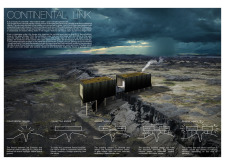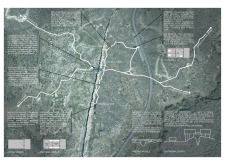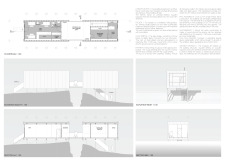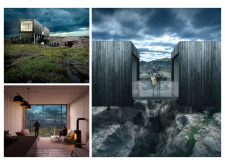5 key facts about this project
The visitor center is strategically located above the continental fissure that marks the boundary between the Eurasian and American tectonic plates in Iceland. This unique position allows for an engaging experience with the surrounding landscape. The overall design emphasizes the contrasts found in nature, providing visitors a chance to connect with the area's geological features. Acting as a bridge, the center also serves as a hub for various hiking trails, enhancing the experience for those exploring the region.
Design Concept
The structure consists of two main volumes, linked by a glass bridge that offers views of the fissure below. This arrangement encourages movement and interaction, guiding visitors from one area to another. The bridge not only acts as an observation point but also highlights the natural divide, allowing guests to experience the geological significance of the site.
Spatial Organization
Inside, the center includes essential spaces such as an office located to the west and a café situated to the east, providing necessary amenities for visitors. The exhibition area in the center functions as a communal space that also offers outstanding views. This thoughtful layout invites exploration, allowing guests to engage with Iceland's remarkable geological characteristics.
Material Selection
Material choices have been carefully made to balance aesthetics and function. The exterior features burnt Yakisugi wood, a durable option that withstands the harsh climate. This material complements the rugged landscape while maintaining visual harmony. Inside, white glazed pine planks create a warm and welcoming atmosphere, contrasting with the more austere exterior.
Natural Integration
The design incorporates large openings that connect the interior with the outdoors. These windows allow natural light to brighten the space while framing views of the stunning landscape. This connection to the surrounding environment helps ground visitors in the area's geological importance. As they move through the center, they are reminded of the natural beauty that defines this unique region.






















































